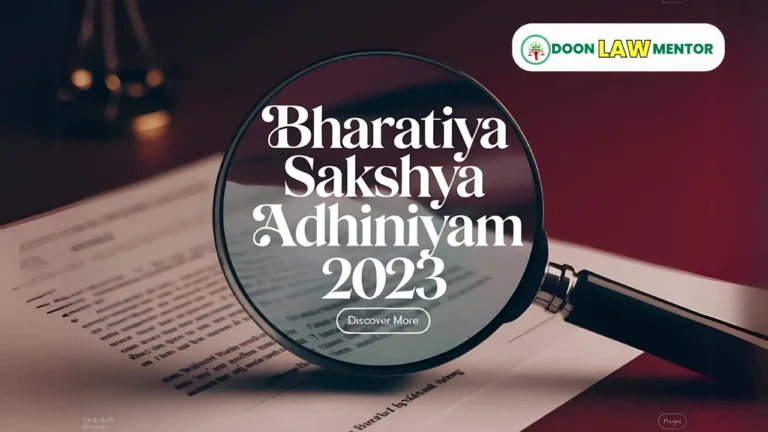Discover actionable strategies simplifying legal provisions, enhance understanding, and ace your judiciary exam with confidence.
Table of Contents
Judiciary exams in India are highly competitive, demanding in-depth knowledge of intricate legal provisions. For law students, understanding and memorizing these provisions can be overwhelming. However, simplifying complex legal concepts is the key to mastering them. This guide explores proven strategies to make legal provisions more digestible, ensuring you’re fully prepared for your judiciary exams.
Why Legal Provisions Seem Complex
Legal language is inherently dense, characterized by long sentences, archaic terms, and technical jargon. The combination of the following factors makes legal provisions challenging for students:
- Lack of Familiarity with Terminology: Words like locus standi, ultra vires, or actus reus can confuse new learners.
- Statutory Overlaps: Provisions from different laws often intersect, creating ambiguity.
- Multiple Interpretations: Judicial precedents and amendments lead to varying interpretations.
To overcome these barriers, a strategic approach is necessary.
Strategies to Simplify Complex Legal Provisions
1. Break Down the Provision into Smaller Parts
A legal provision often comprises multiple clauses and sub-clauses. Breaking it down into manageable parts can significantly improve comprehension.
- Example: Section 96 of the Indian Penal Code (IPC) states:
“Nothing is an offence which is done in the exercise of the right of private defence.”Simplification Steps:- Identify the main clause: “Nothing is an offence.”
- Add the condition: “If done in the exercise of private defence.”
- Rewrite: “Actions taken in private defence are not considered offences.”
2. Use Flowcharts and Diagrams
Visual aids such as flowcharts, Venn diagrams, or mind maps are effective tools to simplify and organize information.
- Example: For the hierarchy of courts, create a flowchart starting with the Supreme Court, followed by High Courts, and then subordinate courts.
Visual representations make it easier to recall during exams.
3. Translate Legal Jargon into Simple Language
Legal terminology can be daunting. Translating it into simple, everyday language makes it relatable and easier to understand.
- Example:
- Legal Term: Res ipsa loquitur
- Simplified Meaning: “The thing speaks for itself.”
Maintain a glossary of terms to strengthen your understanding over time.
4. Relate Provisions to Real-Life Scenarios
Linking abstract provisions to real-life cases or examples fosters better retention.
- Example: Article 21 of the Constitution guarantees the “right to life and personal liberty.” Relate this to cases like Maneka Gandhi v. Union of India, which expanded the scope of Article 21 to include the right to privacy.
Practical associations make complex legal principles more tangible.
5. Summarize Key Points
Every provision has a core idea that can be summarized. Focus on identifying the essence.
- Example:
- Provision: Section 300 of IPC defines murder.
- Summary: “Intentional killing with specific conditions is classified as murder.”
Keep summaries concise and clear for quick revision.
6. Cross-Referencing with Case Laws and Amendments
Provisions often evolve through amendments and judicial interpretations. Cross-referencing helps clarify ambiguities.
- Example:
- Shah Bano Case (1985): Explained maintenance rights under Section 125 CrPC and influenced the Muslim Women (Protection of Rights on Divorce) Act, 1986.
- Relate the provision to the case for contextual understanding.
7. Practice Active Recall and Spaced Repetition
Revisiting legal provisions at spaced intervals enhances memory retention. Combine this with active recall techniques, such as:
- Writing down the provision from memory.
- Explaining the provision aloud to someone.
Using Technology to Simplify Legal Provisions
Leverage digital tools to aid your preparation:
- Apps for Legal Learning: Platforms like Bare Acts by Indian Kanoon provide simplified summaries of laws.
- Video Lectures: Platforms like Unacademy and YouTube offer video lessons on complex provisions.
- Mind Mapping Tools: Apps like MindMeister can create interactive visual aids.
Common Mistakes to Avoid
- Ignoring Context: Understanding a provision in isolation can lead to misinterpretation. Always consider the legislative intent and judicial precedents.
- Overloading Information: Avoid cramming too many details at once. Focus on clarity over quantity.
- Skipping Revisions: Regularly revisit and revise key provisions to avoid last-minute panic.
Case Studies: Simplifying Complex Provisions in Judiciary Exams
1. The Doctrine of Basic Structure
- Provision: The Constitution’s basic structure cannot be amended.
- Simplification: Use a case study like Kesavananda Bharati v. State of Kerala (1973) to explain the doctrine with examples like judicial review and federalism.
2. Criminal Law and Exceptions
- Provision: Section 84 IPC states that “an act of a person of unsound mind is not an offence.”
- Simplification: Relate it to the McNaughten Rules and real-world cases involving insanity pleas.
FAQs on Simplifying Legal Provisions
Q1. How can I make legal provisions less intimidating?
Start by breaking them into smaller parts and translating the language into simpler terms. Use visuals and examples to enhance understanding.
Q2. What tools can help simplify legal studies?
Apps like Indian Kanoon, mind mapping tools, and video lectures can make learning more interactive and efficient.
Q3. Is it necessary to memorize provisions word-for-word?
No, focus on understanding the essence and being able to explain it clearly. However, for judiciary exams, quoting sections verbatim can be beneficial.
Q4. How can case laws aid in simplifying provisions?
Case laws provide practical examples and interpretations, making abstract provisions easier to comprehend and apply.
Q5. How often should I revise legal provisions?
Use spaced repetition, revisiting provisions every few days initially, and then weekly as exams approach.
Q6. What is the role of amendments in simplifying provisions?
Amendments often clarify or modify provisions. Understanding them can provide a clearer picture of the law’s evolution and current application.
Conclusion
Mastering How to Simplify Complex Legal Provisions for Judiciary Exams is essential for aspiring judges. Breaking down provisions, using visual aids, and connecting laws to real-world scenarios ensures a strong grasp of the subject. By adopting these strategies and leveraging modern tools, you can navigate the complexities of legal provisions with ease and confidence.
JudiciaryExamPreparation, #LegalSimplification, #LawStudentsIndia, #JudiciaryTips, #LegalEducation, #JudiciarySuccess, #IndianJudiciary, #JudiciaryExams, #SimplifyLaw








